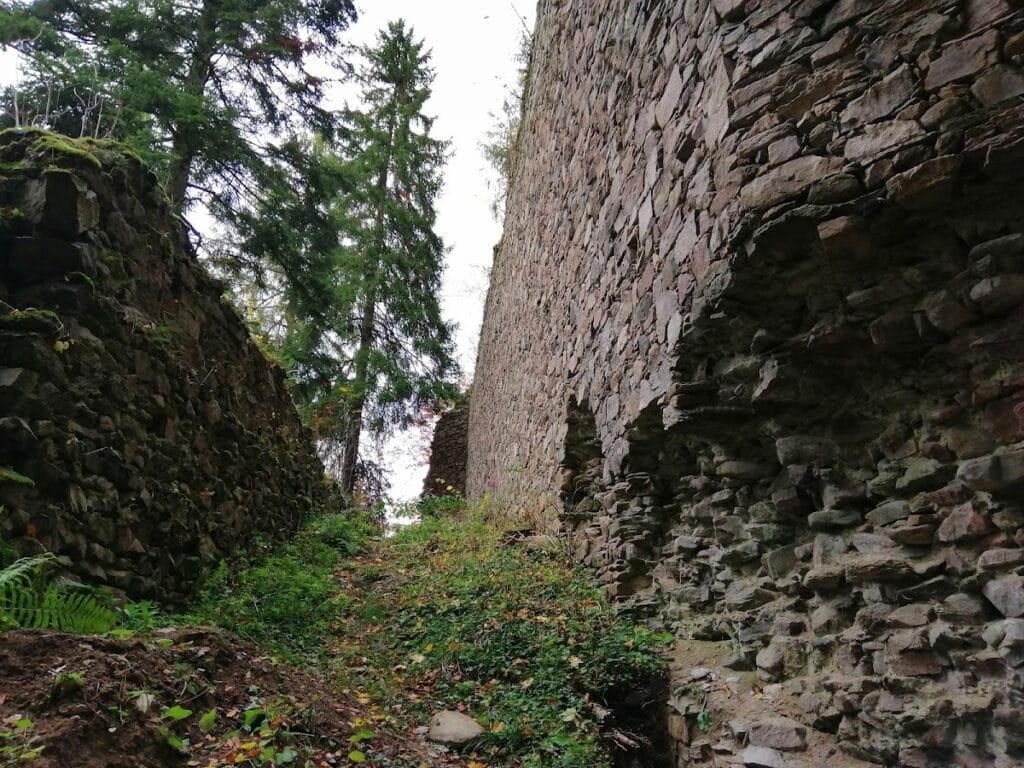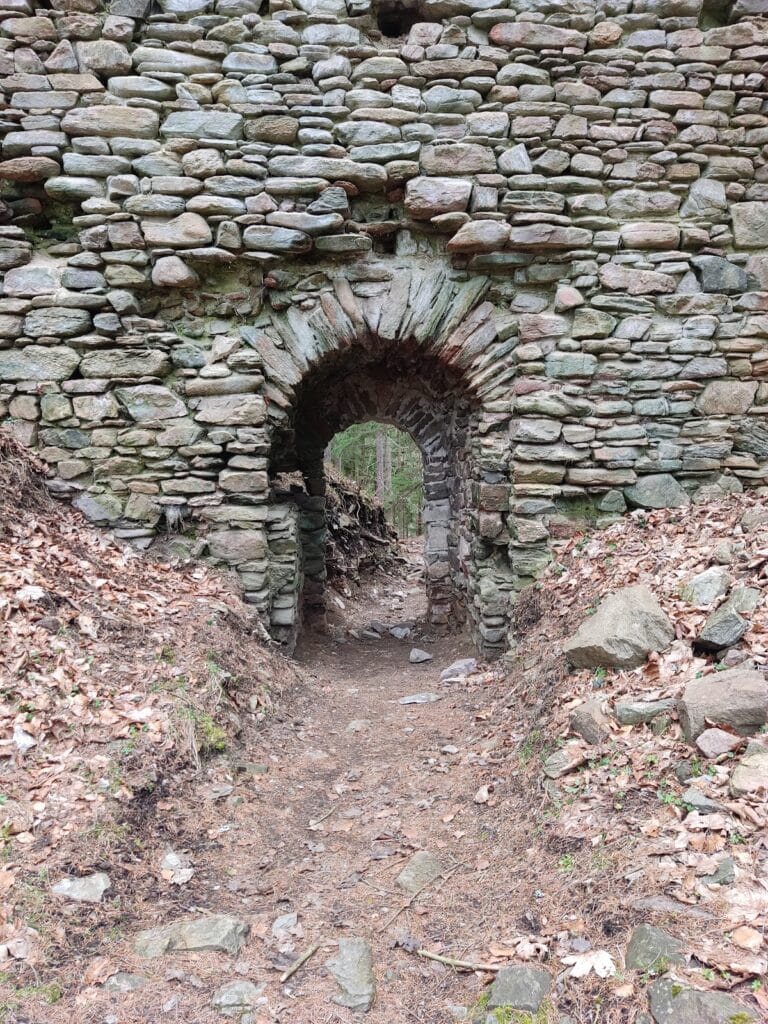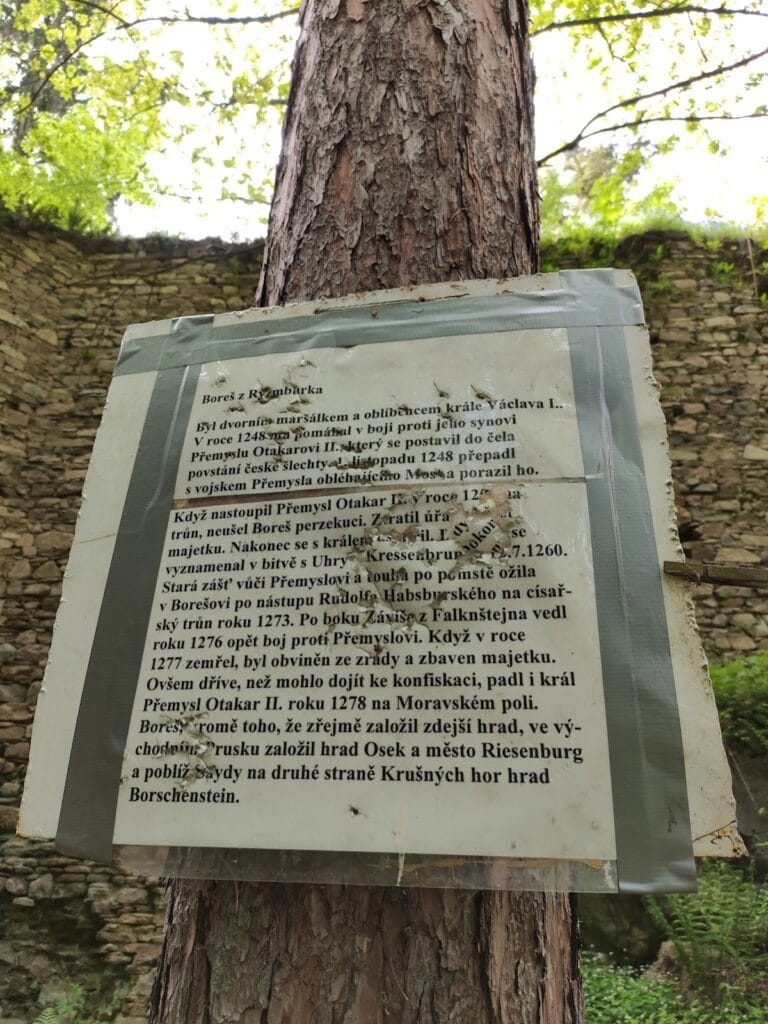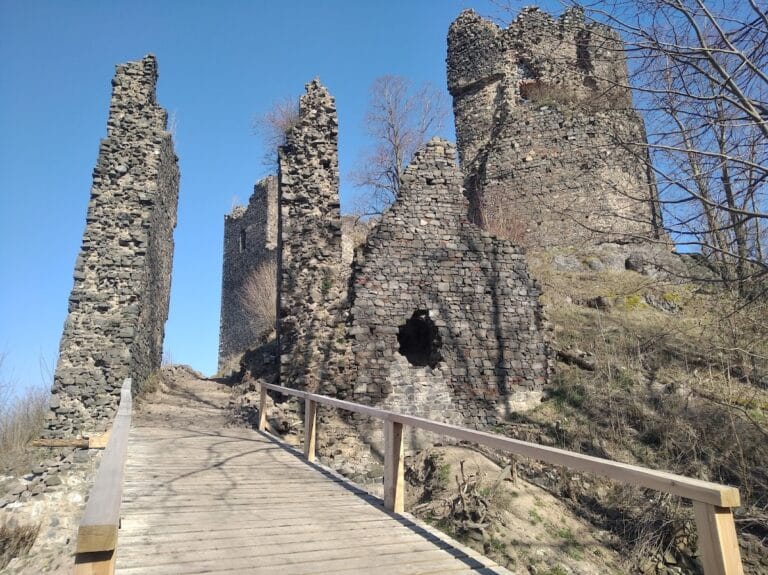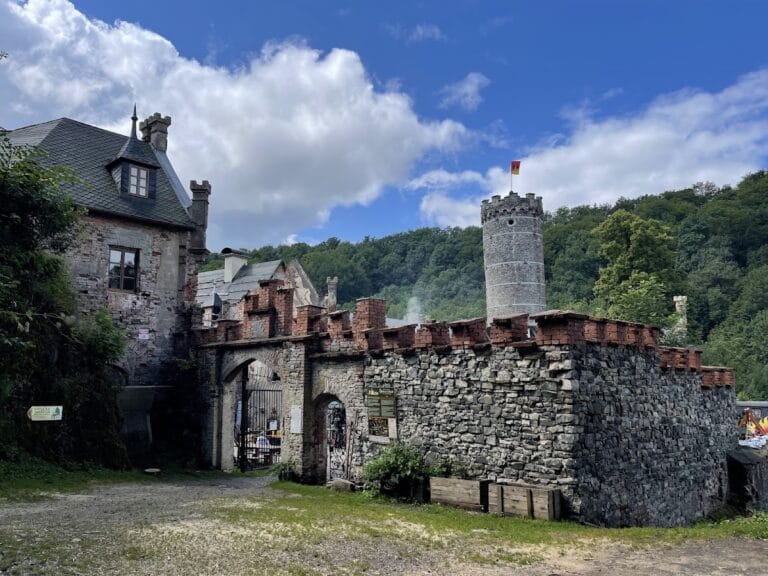Perštejn Castle: A Medieval Fortress in the Czech Republic
Visitor Information
Google Rating: 4.4
Popularity: Low
Google Maps: View on Google Maps
Country: Czechia
Civilization: Medieval European
Remains: Military
History
Perštejn Castle is located in the municipality of Perštejn in the modern Czech Republic. The castle was established during the second half of the 13th century, most likely constructed by the lords of Šumburk or their relative Boreš of Rýzmburk, who is recorded in documents between 1248 and 1276. The earliest written mention of the castle itself dates from either 1338 or 1344, when Bedřich of Šumburk is identified as its lord.
By the mid-14th century, the Šumburk family secured their possessions, including Perštejn, as fiefs granted by King Charles IV in 1352. During the turbulent Hussite Wars of the early 15th century, internal disputes fragmented the Šumburk estates. This division in 1431 saw Aleš of Šumburk inherit Perštejn. Aleš later allied with the Saxon margrave Frederick in 1446, placing the castle and its owners in conflict with supporters of King George of Poděbrady. Following Aleš’s death in 1451, his sons were under the guardianship of Bedřich, who sustained hostilities against the king’s faction. These tensions culminated in a military campaign that resulted in the capture of Perštejn by July of the same year.
Despite orders to demolish and abandon the stronghold after its fall, Perštejn remained standing well into the early 16th century. In 1508, records show the presence of mercenaries and siege machinery at the site, suggesting its ongoing strategic value. Ownership shifted several times during the late 15th and early 16th centuries, including confiscations linked to financial offenses. By 1537, the castle was described as a ruin, and in 1539 it was permanently integrated into the Šumburk estate. Administration of the estate was transferred to the nearby Klášterec nad Ohří chateau, signaling the end of Perštejn as a residential or military seat.
Since 1963, Perštejn Castle’s remains have been protected as a cultural monument, preserving the legacy of this medieval fortress.
Remains
Perštejn Castle occupies a steep rocky promontory rising 466 meters above sea level, a site naturally suited for defense. Approaching from the north, visitors would cross a double moat to reach the castle’s first courtyard located in what is called the lower castle area. This courtyard is enclosed on the west by a tall wall featuring a small gate that leads into a narrow defensive passage, known as a zwinger, which is further strengthened by a square bastion opening inward at the corner. The east side of the courtyard once hosted a building, now preserved only as small sections of its wall.
On the southern side, beneath the castle’s main core, another square bastion was integrated into an outer defensive wall stretching westward toward the bergfried, a tall tower. The bergfried itself stands north of the core area and forms part of the wall enclosing the first courtyard. It was likely reached via a drawbridge connecting from the wall walk atop the castle’s core. Between the tower and the main castle body there is a partially buried gateway, indicating limited controlled access.
The castle’s core occupies the highest point on the rocky outcrop and features an oval shape. While the exact layout is complicated due to the terrain and fragmented walls, archaeological evidence suggests it was probably a towerless fortification enclosed by a curtain wall, a continuous defensive barrier.
In addition to the castle ruins, an associated siege camp lies approximately 450 meters to the north on a ridge extending from Vysoká hill. Covering about 0.69 hectares, this enclosed site features an oval fortification with a small square redoubt measuring 11 by 11 meters. The fortification is encircled by an earthwork rampart roughly 1.5 meters high and a ditch up to 3 meters wide and 1 meter deep. The camp’s natural defenses include steep slopes on its flanks, bolstered by a linear fortification running 95 meters along one side. This defensive line incorporates two bastions to provide additional protection.
Nearby, on Perštejnský Špičák hill at 407 meters elevation, a surface feature may be connected to the siege operations. Positioned to control approach routes, this location was not suitable for direct artillery bombardment but appears to have strategic importance during the military events documented at the castle.
Most standing structures at Perštejn Castle are built from stone masonry. Remains include large sections of walls, bastions, the bergfried tower, and the defensive zwinger area. The state of preservation varies, with some walls recently documented to have partially collapsed. These surviving elements provide valuable insights into the castle’s construction, defensive design, and its role in the region’s medieval history.
